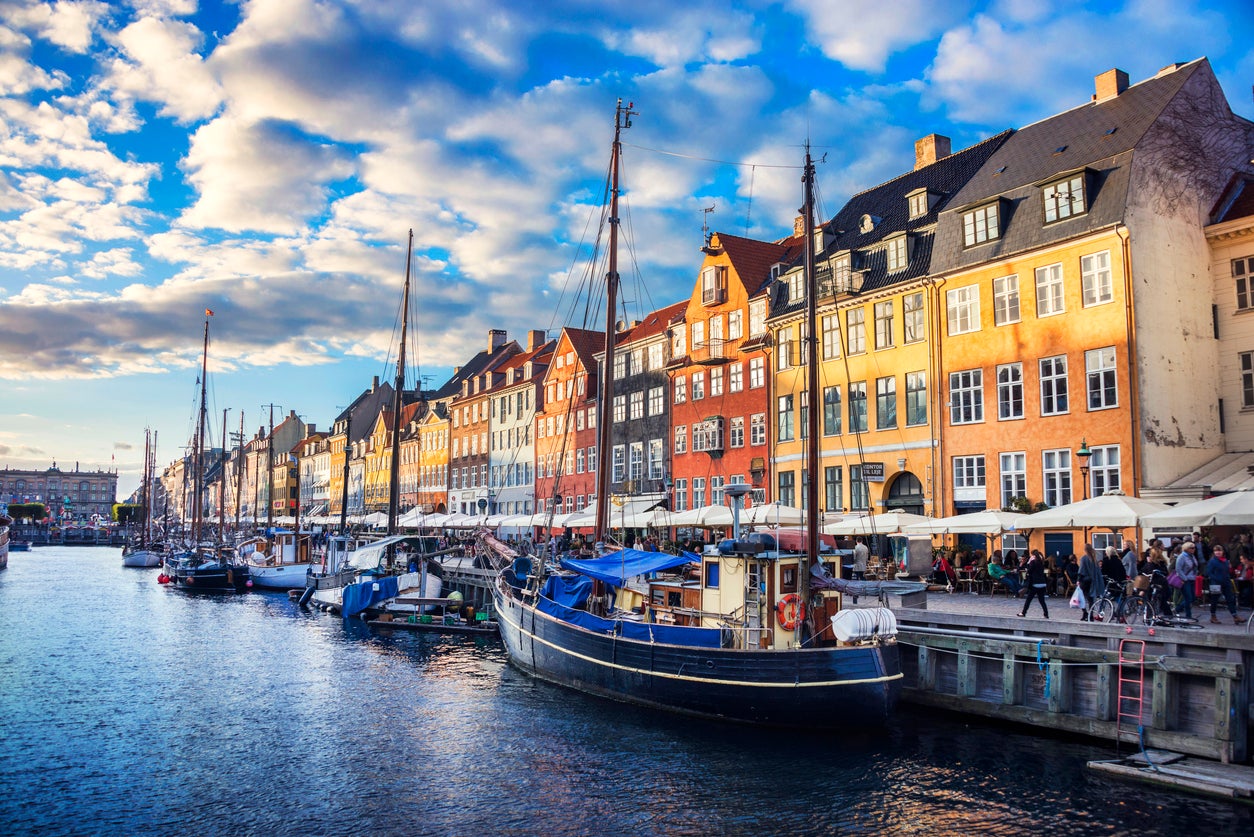The Independent's journalism is supported by our readers. When you purchase through links on our site, we may earn commission.
‘15-minute cities’ are now all the rage, but are they ultimately limiting?
The 15-minute city aims to create an area that can be explored within the same amount of time, giving all residents access to their needs


Your support helps us to tell the story
From reproductive rights to climate change to Big Tech, The Independent is on the ground when the story is developing. Whether it's investigating the financials of Elon Musk's pro-Trump PAC or producing our latest documentary, 'The A Word', which shines a light on the American women fighting for reproductive rights, we know how important it is to parse out the facts from the messaging.
At such a critical moment in US history, we need reporters on the ground. Your donation allows us to keep sending journalists to speak to both sides of the story.
The Independent is trusted by Americans across the entire political spectrum. And unlike many other quality news outlets, we choose not to lock Americans out of our reporting and analysis with paywalls. We believe quality journalism should be available to everyone, paid for by those who can afford it.
Your support makes all the difference.At long last, it appears that the worst days of the Covid-19 pandemic may finally be behind us. Despite early predictions of a lasting urban exodus, people are heading back to great cities. But the pandemic has brought many potentially lasting urban changes, including the attribution of streets once used for cars and parking to bike lanes, parklets and restaurants.
One of the biggest urban ideas to emerge from the pandemic is the notion of the 15-minute city or 15-minute neighbourhood, a place where all the necessities of daily life – stores, schools, workplaces, doctor’s offices, parks, libraries, restaurants and other amenities – are located in a short 15-minute walk or bike ride from home.
Developed by the French urbanist Carlos Moreno and put into practice by Paris mayor Anne Hidalgo, its original French moniker is “la ville du quart d’heure”. Fifteen minute neighbourhoods are all the rage in new developments from Paris to Portland.
The 15-minute city aims to reorganise physical space around the human experience of time. Each neighbourhood becomes an isochrone – an area that can be explored within the same amount of time – giving all residents access to their needs within the same convenient walk.
In each “15-minute” neighbourhood, workers can live near their offices or co-working spaces, eliminating the painful commute. Anyone can walk to a small, nearby park without having to hunt for parking lots. Community building will benefit too; parceling a city into smaller units makes it far more manageable from a social point of view.
Such experiments are unprecedented and exciting, and they stand on long-established planning principles. Since the crisis of monofunctional modernism in the post-war era, urban planners and designers have proposed mixed use developments, where residences, schools and shops stand side by side in diverse neighbourhoods. The 15-minute neighbourhood provides a specific spatial scale and suggests a new model of the larger city, which emerges akin to a fractal organism made of small, repeating parts. What’s not to like?
For one, the 15-minute neighbourhood is a tough fit for a suburban nation like the United States. While it is rather easy to envision Paris or Copenhagen or Barcelona, and even much of Manhattan or Brooklyn or big slices of Boston and Cambridge embracing the 15-minute framework, it is hard to imagine in far-flung, sprawling suburbs where the majority of Americans live. American cities and suburbs might only make the 15-minute cut-off if it could be done in a car.
And 15-minute communities do little to alter the harsh realities of economic and geographic inequality. They promise nearby amenities and luxurious walkability for the well to do urban gentry. They are mainly a fit for affluent urban neighbourhoods and far less a fit in the disadvantaged parts of our cities. As Harvard University’s Edward Glaeser points out, less advantaged groups are hardly able to live their life in their own disadvantaged neighbourhoods, which lack jobs, grocery stores and amenities found in more upscale communities.
Many of our urbanist colleagues find themselves asking what is so new about the idea of the 15-minute neighbourhood. They see the construct as little more than a rebranded notion of urban neighbourhoods or “villages”. Village life has many upsides – tight-knit communities, a relaxed pace of life, easy commuting – but it lacks the dynamism of a real city.
The reality is that urban life requires the broad expanse of entire cities and metro areas. And it is impossible to replicate some of the most important institutions – great universities, great museums, great theatres – at a neighbourhood scale. Cities thrive because they create a market for these incredible institutions and assets.
We might visit the coffee place on our block every day, but we’ll only take the subway to the museum or theatre once a month. Indeed, research by one of us published recently in Nature, shows that in everyday life, the frequency of our visits to a given location is inversely proportional to its distance from our homes.
Instead of a complete 15-minute city, we propose something akin to a “15-minute baseline”. That more circumscribed term can serve to remind us of the important fact that the truly vibrant parts of the city often begin when the first 15 minutes end. With easy access to the essentials, we can save our longer trips for where we need them; to encounter and participate in that diversity and specialisation that are only possible at the scale of a real city and metro area.
Great neighbourhoods are incomplete by definition, functioning as proverbial stepping stones or starting places from which residents can strike out further. Great neighbourhoods are never self-contained but are always an outgrowth and function of great cities.
Carlo Ratti is a professor at MIT, where he directs the Senseable City Lab. He is also a co-founder of the international design and innovation office CRA – Carlo Ratti Associati.
Richard Florida is a professor at the University of Toronto and co-founder of CityLab. He is the author of The Rise of the Creative Class and most recently, The New Urban Crisis
Join our commenting forum
Join thought-provoking conversations, follow other Independent readers and see their replies
Comments